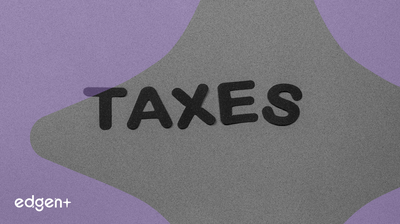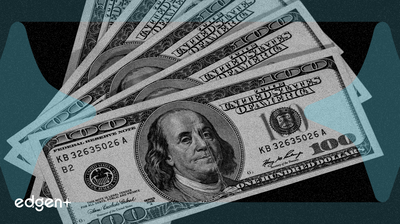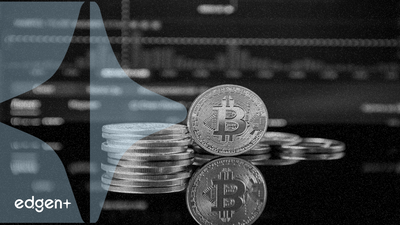Related News

Dallas Fed's Logan Signals Difficulty in Supporting December Rate Cut Amid Persistent Inflation Concerns
## Executive Summary Dallas Federal Reserve President Lorie Logan has signaled significant difficulty in supporting an interest rate cut in December, citing ongoing concerns about high inflation and the pace of labor market cooling. This stance, from a voting member of the Federal Open Market Committee (**FOMC**), introduces caution into market expectations that had previously priced in more aggressive rate reductions. ## The Event in Detail Ms. Logan explicitly stated that given current economic conditions, it would be “difficult” to endorse another December rate cut. Her position is notable due to her role as a voting member on the **FOMC**, reflecting a growing caution within the Federal Reserve. This contrasts with earlier market sentiment which had anticipated more aggressive rate cuts. Logan emphasized her intent to closely monitor incoming data and financial conditions before any decisions are made. The Fed's hesitation is rooted in several critical macroeconomic indicators, including persistent inflation trends, price stability metrics, prevailing labor market conditions, and global economic developments. ## Market Implications The Federal Reserve's cautious approach to interest rate adjustments, driven by inflation and employment data, has direct implications for risk assets, including cryptocurrencies. Traditionally, tighter monetary policy tends to decrease investment in such assets. Despite this, persistent global inflation continues to drive investor interest in cryptocurrencies as a potential hedge against the erosion of purchasing power. A **MEXC** survey from Q1-Q2 2025 indicated that 46% of global crypto users view digital assets as an inflation hedge. This sentiment emerged even as Bitcoin experienced a 3.03% drop over 24 hours in August 2025, falling to $117,000 after briefly topping $122,000, following gloomy inflation data. Q3 2025 witnessed a significant surge in crypto activity, with average daily trading volume jumping by 43.8% to $155.0 billion, underscoring continued market engagement despite broader economic uncertainties. ## Expert Commentary Most analysts anticipate the Federal Reserve will delay the first interest rate cut until at least May 2025, primarily due to core inflation remaining at 3.1%. While **Bitcoin** has stabilized near $82,700 in some periods, experts caution about potential crypto market volatility, citing external risks such as tariffs that could fuel future inflationary pressures. Conversely, some predictions suggest **BTC** could reach $175,000 in 2025, with Blockware Solutions forecasting a potential price of $400,000 per **BTC**. The downside risk is projected to find strong support around the $70,000 mark. Furthermore, **Ethereum** (**ETH**) is predicted to reach $5,400 by year-end, driven by a potential

Federal Reserve Governor Milan Signals Dovish Shift, Citing Stablecoins' Influence on Neutral Interest Rates
## Executive Summary Federal Reserve Governor Milan has advocated for a more dovish monetary policy, including potential interest rate cuts, citing recent economic data and the significant influence of stablecoins on the neutral interest rate. Milan’s assessment highlights weakening labor market data and better-than-expected inflation figures as primary drivers for a policy shift. He specifically points to the proliferation of stablecoins as a factor that could depress the neutral interest rate, or "r-star," by up to 0.4 percentage points, suggesting that current interest rates may be excessively tight. ## The Event in Detail Speaking to economists in New York, Federal Reserve Governor Milan stated that economic data received since the Federal Reserve's September policy meeting supports a "dovish stance." He noted that "inflation data has been better than we expected" and that labor market data has "weakened." This assessment aligns with reports of the US JOLTS Job Openings data coming in lower than expected at 7.181 million. Governor Milan elaborated that the growing adoption of crypto tokens linked to the US dollar, specifically stablecoins, is poised to depress what economists refer to as the "r-star," or neutral interest rate. Citing previous research, he indicated that stablecoin growth could reduce the Federal Reserve's benchmark interest rate by 0.4 percentage points. Milan emphasized that stablecoins are already increasing demand for US Treasury bonds and other dollar-denominated liquid assets from non-US buyers, a demand he expects to continue growing. He declared, "Stablecoins could become an elephant worth trillions of dollars in central bankers' rooms." This additional supply of loanable capital in the economy is expected to depress neutral interest rates. Milan concluded that if neutral interest rates decline, the Federal Reserve "needs to lower policy interest rates to avoid dragging down economic growth," suggesting a federal funds rate around 2% would be appropriate if the neutral rate is around 0.5%. ## Market Implications A more dovish monetary policy from the Federal Reserve, characterized by interest rate cuts, is generally interpreted as a bullish signal for risk assets, including cryptocurrencies. Reduced interest rates typically increase liquidity in financial markets and lower borrowing costs, which in turn can boost investor risk appetite. Following the release of lower-than-expected US JOLTS Job Openings data, **Bitcoin (BTC)** price experienced a jump of over 2%, trading at $111,825, while **Ethereum (ETH)** surged more than 2%. Furthermore, a weakening US dollar, often a consequence of falling interest rates, can nominally strengthen assets priced in dollars, such as **BTC**. However, market sentiment remains susceptible to fluctuations in Fed policy. Around November 14, 2025, a perceived hawkish stance by the Federal Reserve led to a significant downturn in the cryptocurrency market. During this period, **BTC** experienced a sell-off, declining between 5.62% and 6.55% in a 24-hour period, pushing its value below the $100,000 mark to a six-month low of approximately $95,000 to $97,000. This decline was attributed to diminishing expectations for a December rate cut and notable whale selling, with long-term holders offloading over 815,000 **BTC** in the preceding month. Data from Coinbase-owned crypto exchange Deribit indicated a surge in demand for downside protection in derivatives markets, particularly for protective puts below the $100,000 strike price. ## Expert Commentary Federal Reserve Governor Milan's remarks provide a key expert perspective on the intersection of monetary policy and digital assets. His assertion that "all the data we have received points to a dovish stance" underscores the justification for potential policy adjustments. His detailed analysis of stablecoins' impact on neutral interest rates integrates this emerging financial instrument into core macroeconomic considerations, highlighting its growing influence on traditional financial frameworks. ## Broader Context Governor Milan's focus on stablecoins and their potential to depress the neutral interest rate reflects a growing recognition within traditional financial institutions of the systemic relevance of digital assets. This discussion positions cryptocurrencies not merely as speculative instruments but as factors influencing fundamental macroeconomic variables. The ongoing interplay between inflation data, labor market health, and the Federal Reserve's policy decisions continues to be a critical determinant for both conventional financial markets and the broader crypto ecosystem, leading to periods of both strategic opportunity and pronounced volatility.

Cardone Capital Launches Hybrid Real Estate-Bitcoin Fund with $235 Million Property
## Executive Summary Cardone Capital has initiated a hybrid investment fund, integrating a $235 million multifamily property with a $100 million Bitcoin allocation. The strategy involves reinvesting the property's rental income, estimated at $10 million annually, into further Bitcoin acquisitions. The firm aims for a public listing, framing the fund as a "digital asset treasury" backed by tangible assets and consistent cash flow. ## The Event in Detail Real estate investor Grant Cardone's firm, Cardone Capital, has expanded its multifamily housing fund strategy by pairing traditional commercial property with Bitcoin allocations. The company recently launched its fifth commercial multifamily investment property, a 366-unit complex purchased for approximately $235 million. A significant portion of this fund, $100 million, has been specifically allocated to Bitcoin (BTC). The objective is to combine the low volatility, tax benefits, income generation, and stable value of real estate with the growth potential inherent in Bitcoin. ## Financial Mechanics and Strategy The core financial mechanism of this hybrid fund involves utilizing the net operating income from the real estate asset to continuously acquire more Bitcoin. The property is projected to generate approximately $10 million in net operating income annually, which will be directed toward increasing the fund's Bitcoin holdings. This approach aims to create a continuous buying mechanism for BTC, leveraging the stable cash flow from real estate to mitigate Bitcoin's inherent volatility while capitalizing on its long-term appreciation potential. Strategically, Cardone Capital intends to take this fund public, converting it into shares that trade as a public company. Grant Cardone stated that this public entity would function similarly to "digital asset treasuries" but with the distinction of possessing "a real product, a real asset, real income, real tenants, real customers," and "free cash flow." This differentiates the model from pure digital asset holding companies by grounding it in a revenue-generating operational business. ## Market Implications This innovative hybrid fund model from Cardone Capital could establish a new precedent for asset allocation, potentially drawing interest from a wider investor base in both traditional real estate and cryptocurrency markets. The integration of consistent real estate income for ongoing Bitcoin accumulation provides a sustained demand mechanism for BTC. Should this model demonstrate success, it may encourage traditional Real Estate Investment Trusts (REITs) and other institutional investors to explore similar strategies, diversifying their portfolios with digital assets. The potential public listing of such a blended entity could further expand pathways for institutional participation in the broader Web3 ecosystem, bridging conventional finance with digital assets. The current market environment, characterized by rising institutional investment and a cautiously optimistic outlook in late 2025, with Bitcoin trading above $124,000, suggests a receptive landscape for these novel financial products. ## Broader Context The Cardone Capital initiative aligns with an evolving regulatory and investment landscape for digital assets. Regulatory advancements, such as the SEC's "Project Crypto" in July 2025, have streamlined the approval process for crypto ETFs, accelerating institutional adoption. Notably, BlackRock's iShares Bitcoin Trust (IBIT) accumulated over $52.3 billion in assets within its first year, marking it as a highly successful ETF launch. Such developments underscore a growing appetite for accessible digital asset exposure and a trend toward integrating cryptocurrencies into established financial frameworks. The increasing sophistication of financial products, coupled with significant institutional inflows, signals a maturing market where hybrid models like Cardone Capital's can find traction and potentially drive further innovation.
